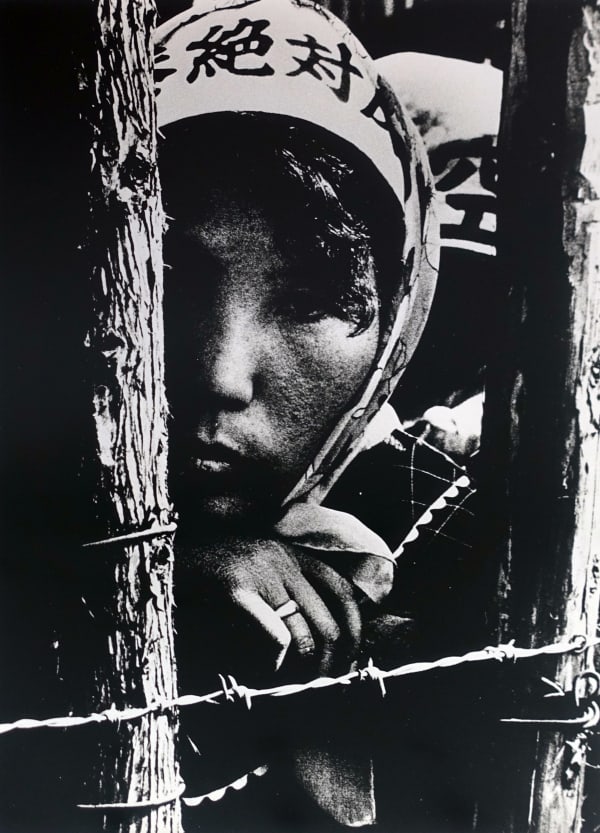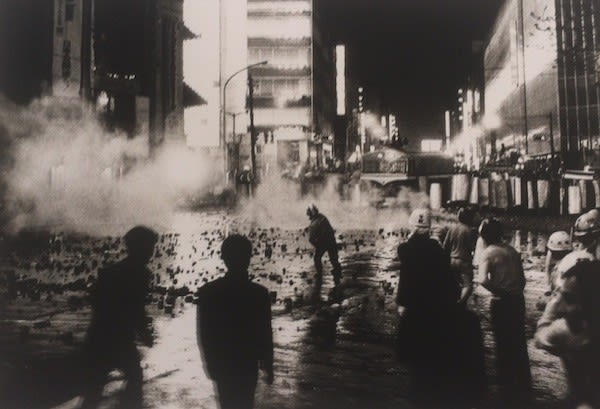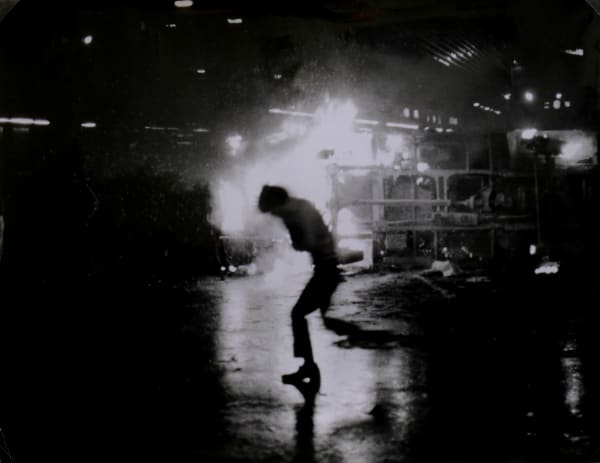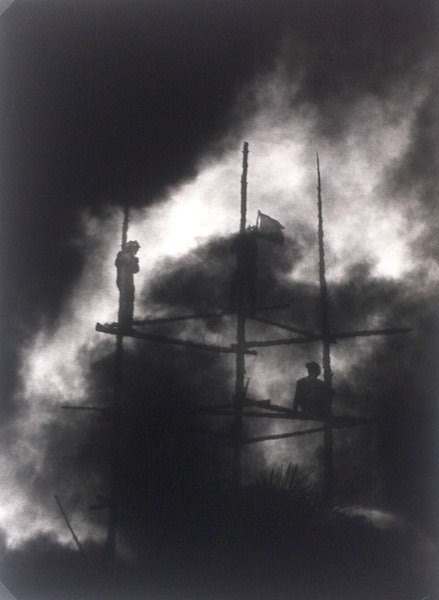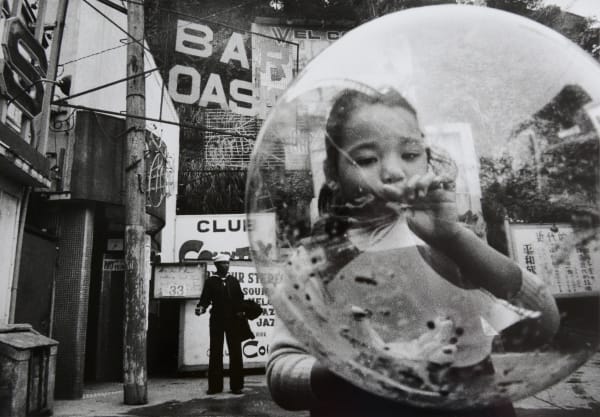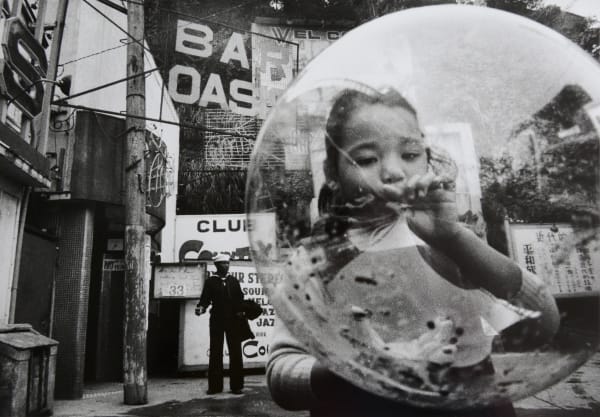Works
Biography
Takashi Hamaguchi embarked on his career as a freelance photojournalist in 1956, at the peak of photojournalism’s popularity and influence in Japan. A movement which coalesced around legendary reportage photographers Domon Ken and Kimura Ihei, photojournalism rejected aesthetic sensibilities and expressive modes of narrative photography in favour of a new Realism, termed the ‘absolutely pure snapshot’ by Domon Ken.
Hamaguchi’s first photograph to attract significant attention showed a student throwing a rock in protest at the wedding carriage of Crown Prince Akihito in 1959. This image, instantaneously captured in all its unanticipated, violent potential, would foreshadow a decade of escalating civil unrest which Hamaguchi would be at the forefront of documenting.
As tension between the Japanese public and their government continued to escalate throughout the 1960s, and displays of popular dissent became a daily fixture of international news coverage, Hamaguchi’s bold and dispassionate account of the times was broadcast across mainstream media channels and passed through more subversive political circles.
His work recording the student movement, fierce anti-American protests, and the bitter campaign against the construction of Narita airport is celebrated for its intensely human perspective. Hamaguchi incorporated elements of humour and details of the living conditions of participants within his version of events, refusing to reduce participants to the sum of their political identities.
Instead of photographing incidents from a partisan standpoint, Hamaguchi remained open-minded, conscientiously committed to capturing situations without bias, so that his audience could make up their own minds: ‘I was driven to shoot simply by a sense of mission, which told me that I had to document and disseminate the situation.’
Today, Hamaguchi’s work is held in the collections of the Yokohama Museum of Art, the China Art Museum, Shanghai, and the Romanian National Gallery of Art. His major awards include the All-Japan Mainichi Photography Exhibition Prime Minister’s Award (1964).
Exhibitions
-

Frieze Masters 2022
Regent's Park • Stand A08 12 - 16 Oct 2022At Frieze Masters 2022, we are delighted to be exhibiting key works by members of the iconic generation of Japanese photographers who rose to prominence during the post-war period. The...Read more -

PARIS PHOTO NEW YORK 2020
ONLINE FAIR 2 - 5 Apr 2020Read more
News
-

Frieze Masters 2022
Michael Hoppen's Highlights October 10, 2022Michael Hoppen Gallery is delighted to be exhibiting at Frieze Masters 2022, with key works by members of the iconic generation of Japanese photographers who...Read more -

TOKYO: ART & PHOTOGRAPHY
Ashmolean Museum August 31, 2021This exhibition is a celebration of one of the world’s most creative, dynamic and thrilling cities. Explore Japan’s capital city through the vibrant arts it...Read more
Publications
Enquire
